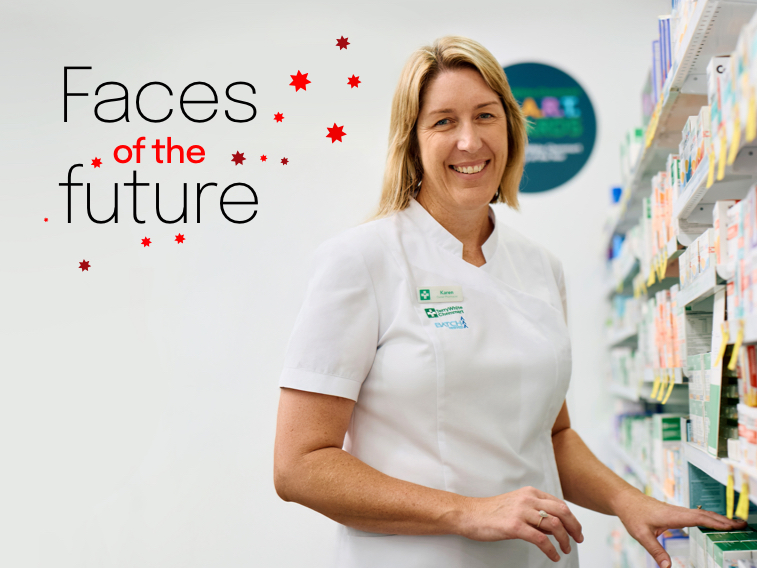Former professional netballer Karen Brown’s passion for scoring healthcare innovation goals has seen her continually break new ground.


Article
Healthcare providers want to operate efficiently while providing the best possible care for their patients. Here’s how digitisation – My Health Record specifically – can help with both.
By the end of January 2019, every Australian who hasn’t opted out will have a My Health Record – an online summary of their health information. But what impact will this have on the business of providing healthcare?
“Digitisation is going to have a far-reaching impact on how healthcare providers run their practices, manage their time and, ultimately, on the conversations they have with their patients,” says Kate Galvin, Customer Executive, Health at NAB.
“Every business owner, from general and specialist practitioners to hospitals and allied health professionals, is hunting for efficiencies, and digitisation should support that.”
More productive consultations
Digital health can mean better health for all Australians through safe, seamless, secure digital health services and technologies that provide a range of tools for both patients and providers. That’s the vision of Australia’s National Digital Health Strategy, and My Health Record is a significant step in the process of digitisation.
For a start, My Health Record should contribute to more productive consultations.
“Patients often spend a great deal of the allocated time providing their medical history, particularly at a first appointment,” Galvin says. “When doctors or healthcare providers can quickly call up relevant past details, they should have more time to spend on the matter at hand. There’s also the danger that a verbal record won’t be complete and important details will be forgotten.”
What’s more, as Australians get older, they’re more likely to have multiple chronic conditions needing treatment from GPs, a range of specialists and other healthcare providers such as physiotherapists, nutritionists and podiatrists.
“Multidisciplinary care is a big thematic in health and My Health Record supports collaboration,” Galvin says. “Importantly, it’ll bring pharmacists into the loop, giving them an overview of multiple medications with possible interactions and avoidable side effects.”
Galvin also points to more wide-ranging benefits.
“If we’re going to continue to have a world-class health system in the face of rising costs and increasing demand for services, we need to continue to digitise,” she says.
Patients will have a number of mechanisms to manage the content of, and control access to, their Health record. They will also be able to access their health information at any time online and potentially through mobile apps.
“We’re entering the next generation of being able to control your health records, appointments and, eventually, your treatments, from your phone,” Galvin says.
A balancing act
Galvin describes the move to My Health Record as a balancing act.
“As we’ve seen in other industries, digitisation will inevitably require a certain amount of work upfront, including meeting the increasing compliance obligations that come with handling such sensitive data digitally,” she says. “There are also likely to be costs, such as staff training or new software. We saw it in banking, when the whole industry moved from doing everything on paper to computerisation, but the initial investment quickly proved to be very cost-effective and time-efficient.”
She adds that bringing all the benefits to the whole healthcare industry will take time.
“Health is a fragmented sector made up of tens of thousands of individual practices, players and organisations at every level of sophistication,” Galvin says. “For example, some will have practice management software that’s compatible with My Health Record, some will have software that isn’t compatible and some may have no software at all because they’re still paper-based.”
Preparing for the change
The government’s My Health Record website provides detailed information on how to register for My Health Record and connect to the system. There’s also help with accessing training and resources; viewing and uploading clinical information; understanding privacy, security and consent; and informing and supporting patients.
“There’s also a lot of information for patients but I suspect many will still have questions for their healthcare providers about what their My Health Record means for them, so it’s important to be ready for those conversations,” Galvin says. “And, of course, digitisation will also be a big learning curve for some providers.
“NAB has always dealt with complex issues around privacy, records and data and we’re here to support any of our customers looking for information in these areas. We can also provide insight from across the health sector that might be of help to healthcare providers as they move down this digitised path to a virtual world.”
© National Australia Bank Limited. ABN 12 004 044 937 AFSL and Australian Credit Licence 230686.